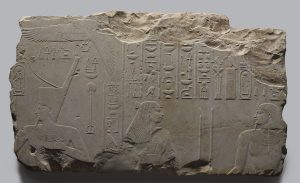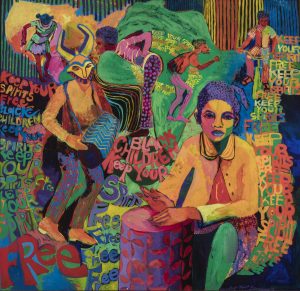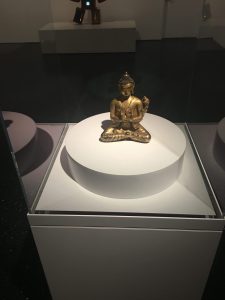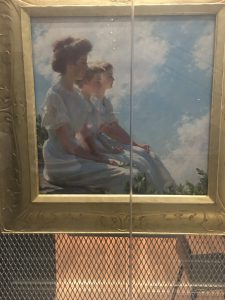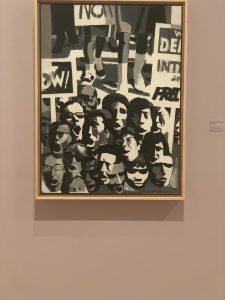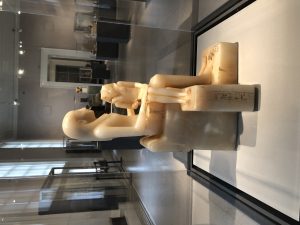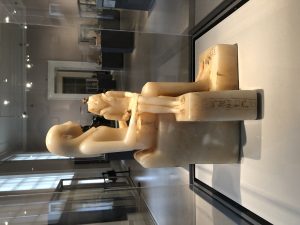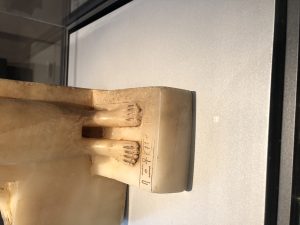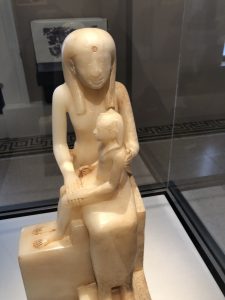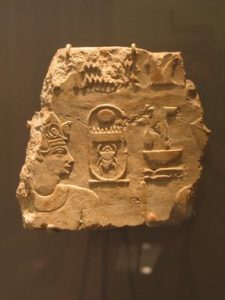
The Ancient Egyptian Art exhibit had a variety of art work. The art work that stood out to me was Royal Statues in Procession. This art work stood out to me because when I saw it, it reminded me a lot of the what we have talked in class. When using formal analysis to understand this piece of art the first thing I thought of was the symmetry of it. This art work does not have symmetry, the shape of it is more of a rhombus than a square. The color of this art piece is solid, a sand color only. What this art work most reminded me about our class was the pop out of the engraved people. When you look to the left of it, the focus of the art work is there. What looks like the king of Egypt, Thutmose III, is placed at the bottom left of this piece. Thutmose III was king of the 18th dynasty. As you look to the right of this art work everything deigned is smaller than the king himself. To the right of the king is another figure who is can be interpret as female king Hatshepsut. In class we talked about the sizes of the figures illustrated in an art work and why there was different sizes. We discussed that a king being bigger than the rest of the things displayed is a way of showing hierarchy, and power. The most important person or item of an artwork is for the most part the focus of that piece. This art work reminded me a lot of our class discussions because of the similarity it had with the art work we discussed in class.
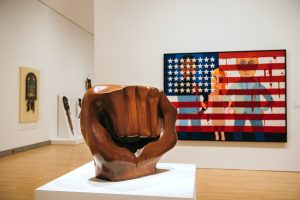
As I saw these art works all I said to myself was, wow. Faith Ringgold’s 1967 painting “American People Series #18: The Flag Is Bleeding” was the art work that caught my attention immediately. The colors of this art work make it stand out, the bloody red and how the woman in the middle seems to be split in half. The left side of the women seems to be alive with her blonde hair. The right side of this women just all seems to be red including her hair. This women is holding the arm of both men illustrated in the painting. The left side is an African American, while to the right side of this woman the man is white. The black man seems to be holding his heart with his hand, with a knife through his hand. The blood around the flag is his. This is representing the violence that was happening during the 1960s. This painting relates to the rest of this exhibit because all together they represent what African American people had to live in the 20th century. Even though this was supposed to represent a different time period, it also represents in a way what is going on today. People of color are still considered minority in the country. The BLM movement had to start when the African American population become such a target to policemen. There have been many cases where black people are shot and no justice is serve. So much of this art work can be connected to what is going on today. The “Soul of a Nation: Art in the Age of Black Power” was such an eye opening exhibit in my opinion.


